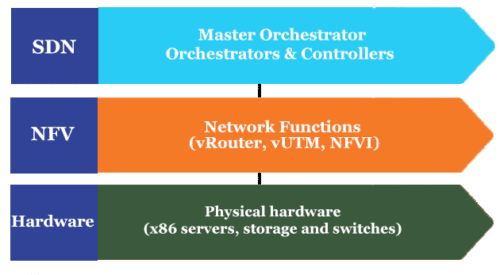Telecommunications
Modern Telecommunications
Definition
Telecommunications refers to the exchange of data using electronic means. This can mean electrical signals over copper wire or even electromagnetic waves over the air.
The telegraph marks the beginning of telecommunications using circuit-switched networks, over time packet-switched networks have largely replaced these analog systems. Over the years specialized hardware systems implementing various network functions and techniques replaced human operators, and systems evolved into fully electronic circuits, and eventually digital – packet-switched networks.
Modern telecommunications technologies from Communication Service Providers (CSP) are evolving into software-based systems using Network functions Virtualization (NFV), and the control plane is separated from the data plane, resulting in a centralized control scheme using Software-defined controllers (SDN).
Basic Elements
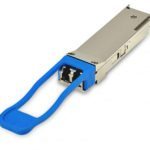
Transmitter: Device which transmits the signal across a shared medium.
Receiver: On the other end of the transmission this component is responsible for receiving the transmission.
Transceiver: A combination of a transmitter/receiver. This is the component responsible for sending signals and receiving the electrical/optical signals. Modern optical communication operates using modular removable transceivers like the one shown above. This allows for great flexibility when choosing the type of media/technology to implement.
Medium
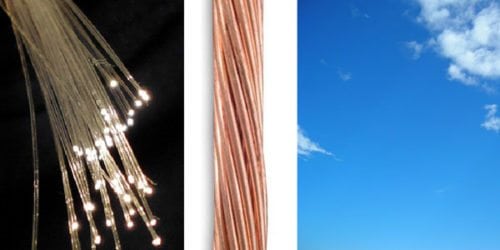
The shared component in telecommunications, it is the physical material used to transmit the signal across distances.
Copper: The preferred media for last-mile communications due to its low cost and existing infrastructure. WAN technologies like DSL, VDLS, and DOCSIS are in use all over the modern and developing world.
Fiber: Used for its long-distance high-capacity properties, most fibers made of fused silica, although other materials such as plastics are sometimes used for its lower cost. Mostly used in long-distance communication, but Fiber-to-the-home is also available from certain service providers.
Air: Electromagnetic signals propagate through the air and provide wireless communications through various technologies.
Concepts/techniques
In telecommunications, several modern technologies and techniques exist for increasing the capabilities of a given medium or transmission. These are:
Modulation: a way to transmit data using the frequencies and amplitudes of a wave. The purpose of this is to convert data into a signal that can be efficiently transmitted over a medium, and demodulated on the other end. A cable modem CPE from an internet provider, for example, performs both these tasks. DSL over telephone copper is another technology using modulation.
Duplex: a method used that allows simultaneous communications on the same line. Walkie talkies operate at half-duplex, only allowing one party to use the communication channel at a time. Cell phones operate at full duplex allowing the 2 or more parties to send and perceive voice data at the same time.
Multiplexing: used in both telecommunications and computer networking, its a method used to combine multiple signals (analog or digital) into a single waveform over a shared medium. This allows modern transceivers to effectively multiply capacity fro a given media without having to replace it. Mostly used by for large fiber network operators to increase their capacity using technologies incorporating extensive multiplexing, i.e NG-PON2.
Circuit Switched network: A network relying on the physical lines themselves to direct transmissions. It takes its name from the fact that the first telephony network operators where humans physically switching the lines to connect the circuits. Although a reliable system, its poor flexibility has made it fall in favor of packet-switched networks. The wireless cellular network operated using circuit switching up until the 3rd generation.
Technology
Beam Splitter: Used in passive optical networks, they split a beam into multiple beams to enable point-to-multipoint networks. A very important component in optical networks, the 2 main standards that exist are Fused Biconical Taper (FBT) splitter and Planar Lightwave Circuit (PLC) splitters, the latter being the modern standard.
Repeater: Due to ambient noise a waveform loses attenuation over distance and can degrade in quality resulting in useless data. Repeaters serve the function of capturing the faded signal and re-transmitting a clean powerful signal to the destination.
Switch: Switches perform the previously mechanical function of joining 2 lines together to form a shared circuit for communications purposes.
Modem: equipment which modulates/demodulates a signal for WAN communications through a copper medium such as a PSTN or cable network. A/H/VDSL modems and DOCSIS cable modems fit into this category, with fiber modems rare as FTTH still has low adoption and deployment rates outside of corporate environments.
Carrier-grade networking: Traditional carrier computing relies on specialized hardware appliances to manage the massive volumes of connections. Some of the main appliances depicted below:
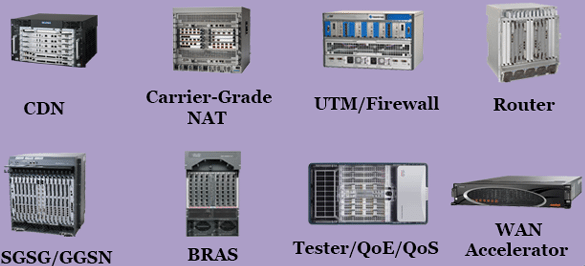
NFV
Network functions virtualization is the initiative taken by many large players in the telecommunications industry. Initiated by ETSI, the European telecommunications standards initiative organization, it puts forth an architecture for transforming inflexible networks that have become a liability, into malleable software-driven systems. It’s the next necessary step in revamping carrier systems from a proprietary hardware-based approach into the emerging hardware-agnostic networks we are seeing today. The NFV approach aims to turn the various functions performed by expensive proprietary network equipment into easily deploy-able, containerized services called VNF’s (virtualized network functions). Examples of currently available VNF’s: Firewalls, network logs, VoIP, routing.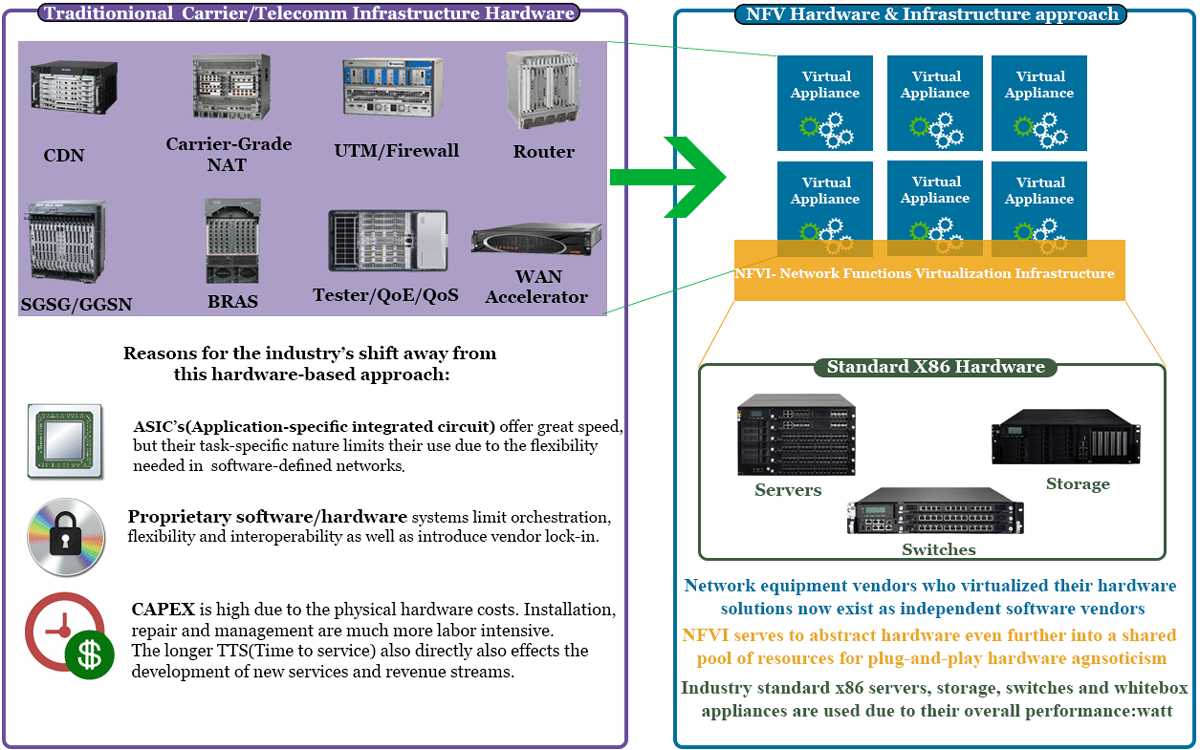
NFV Architecture
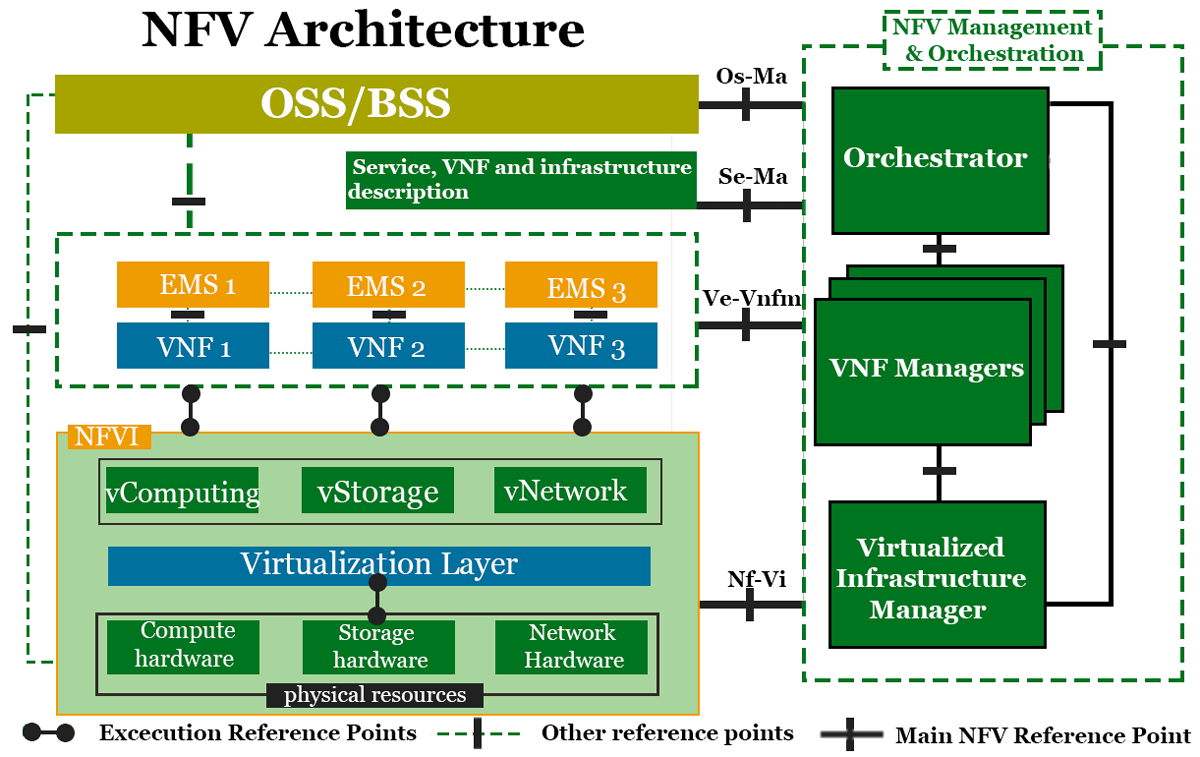 ETSI NFV Architecture illustration
ETSI NFV Architecture illustration
NFVI
In its most absolute definition, it is virtualization and abstraction taken to the lowest levels, the hardware.
NVFi abstracts the actual x86 rack-mount appliances, cables, connectors, storage, network interfaces, and all the physical components so that they are treated as modular resources that are automatically allocated to a shared pool. In simpler terms imagine having 100 machines each with 10 GB ram, 10tb storage; in an NFVI implementation, all those resources would automatically be aggregated and easily view-able, manageable and usable as a shared total of 1000 GB ram 1000TB storage and compute. If you need more resources for a demanding application, simply plug in another unit (which is instantly&automatically provisioned), this is incredibly useful for reducing OPEX and TTS(time-to-service).
SDN
It started out in advanced campus networks(MIT, Stanford), then found a place in the largest data centers(Google, Amazon), where it continued into what it is today.
SDN is a networking concept where the complete separation of the packet-forwarding functions from the network functions is the end goal(in layman’s terms: separate the Data streams from all the controlling functions). How is this done? By utilizing software-based solutions winch can be easily programmable on-the-fly, instead of hardware-centric networks (much like the move to NFV), this allows the software to take control and seamlessly orchestrate the network. This master orchestrator is essentially the heart of SDN. Below is an illustration of how an SDN orchestrator works.
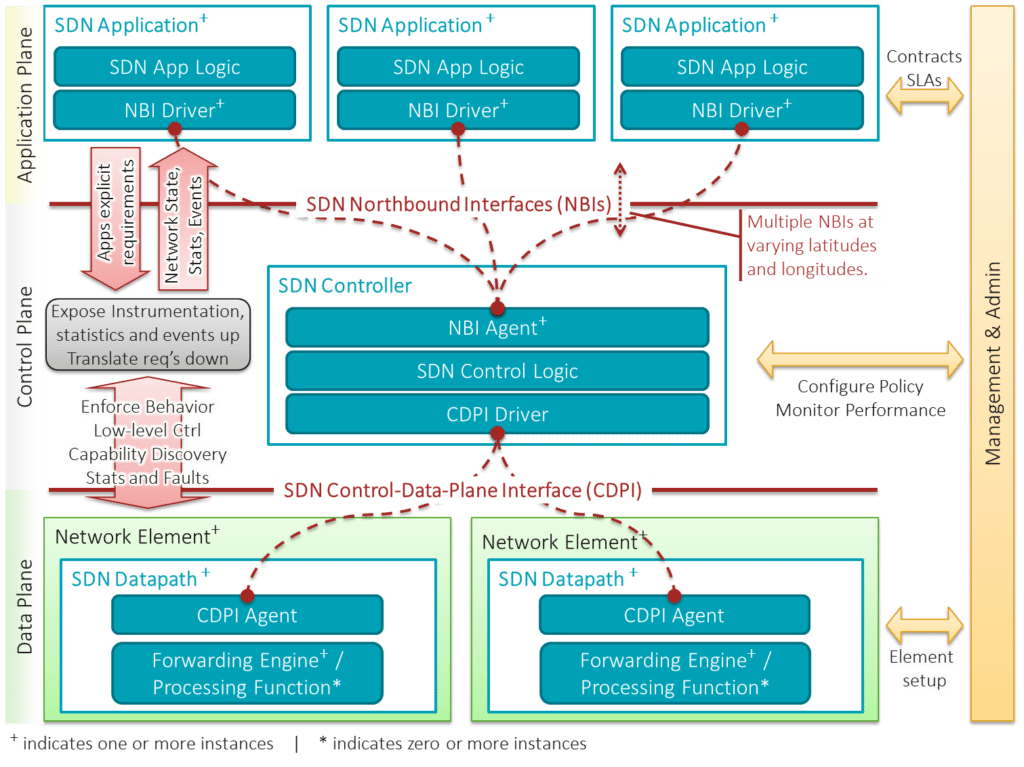
SDN/NFV Interoperability
NFV and SDN both have many overlapping ideologies, technologies, and end goals. In fact, there are already implementations utilizing both of them together. By taking the best qualities of both techniques and using a robust architecture communication service providers are set to deploy some of the most flexible, reliable and robust networks yet.
